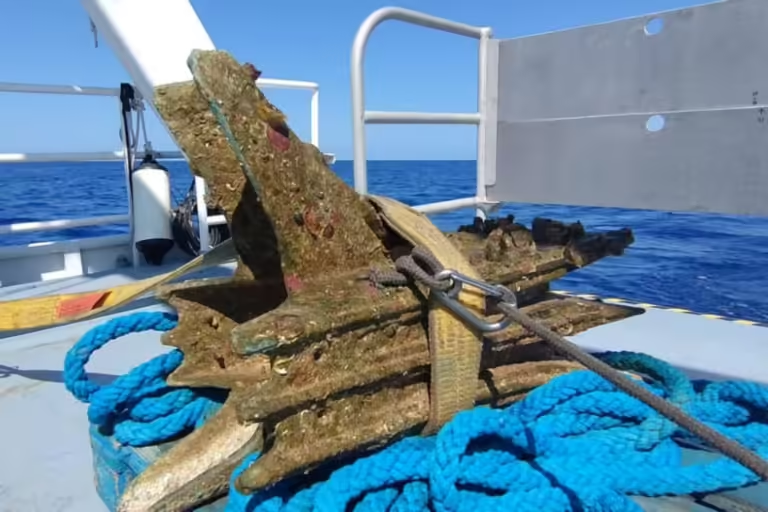An Italian cultural heritage organization has announced that a Roman battering ram has been discovered on the floor of the Mediterranean Sea.
The ram, or rostrum, formed the bow of Roman warships, and according to the team, it was used in the Battle of Aegates, a naval battle between Rome and Carthage that ended the First Punic War in 241 BCE after 23 years of fighting between the two empires.
The discovery of the platform, announced by the Sicily Department of Cultural Heritage and Marine Management, was recovered by divers from the Consortium for the Documentation of Sunken Monuments, which also used a research vessel. Hercules To assist with podium identification and recovery.
Diving teams found the ram’s snout on the ocean floor at a depth of about 262 feet (80 meters). The artifact was recovered from the Mediterranean coast between Levanzo and Favignana, small islands just west of Sicily, where archaeological research has been conducted for the past 20 years. The ram is now on land in Favignana, and initial investigations of the artifact have revealed a decorative relief of a helmet and feathers, according to LiveScience.
According to the team’s social media posts, they’ve found 27 rostra since the early 2000s, which were used to, you guessed it, ram enemy ships, creating holes in them and ultimately sinking them. Their investigations have also identified other ancient warfare artifacts, including 30 Roman helmets, two swords, and a large number of amphorae, a relatively common sight in Mediterranean archaeology.
The Mediterranean Sea, close to Sicily and Tunisia, was a popular maritime corridor during the Roman Empire, at least that’s what recent archaeological discoveries suggest. Last year, a UNESCO-coordinated team discovered three shipwrecks off the treacherous Keis Reef between Sicily and Tunisia, one of which dates to between 200 and 100 B.C. The team also investigated three Roman shipwrecks off the coast of Italy, two of which were 1st-century merchant ships and one from the 1st century B.C.
But the recently discovered podium is older than those wrecks and offers a vivid picture of the ancient battles and fierce naval combats that shaped the ancient world. The Battle of Aegates saw most of the Carthaginian fleet sunk or captured, establishing Roman hegemony in the Mediterranean. In total, there were three Punic Wars between Carthage and Rome, which culminated in the destruction of Carthage.

